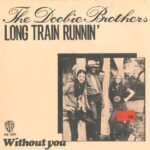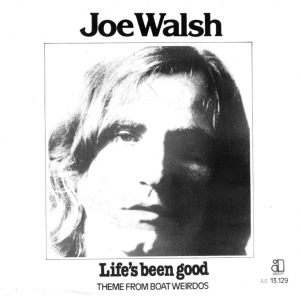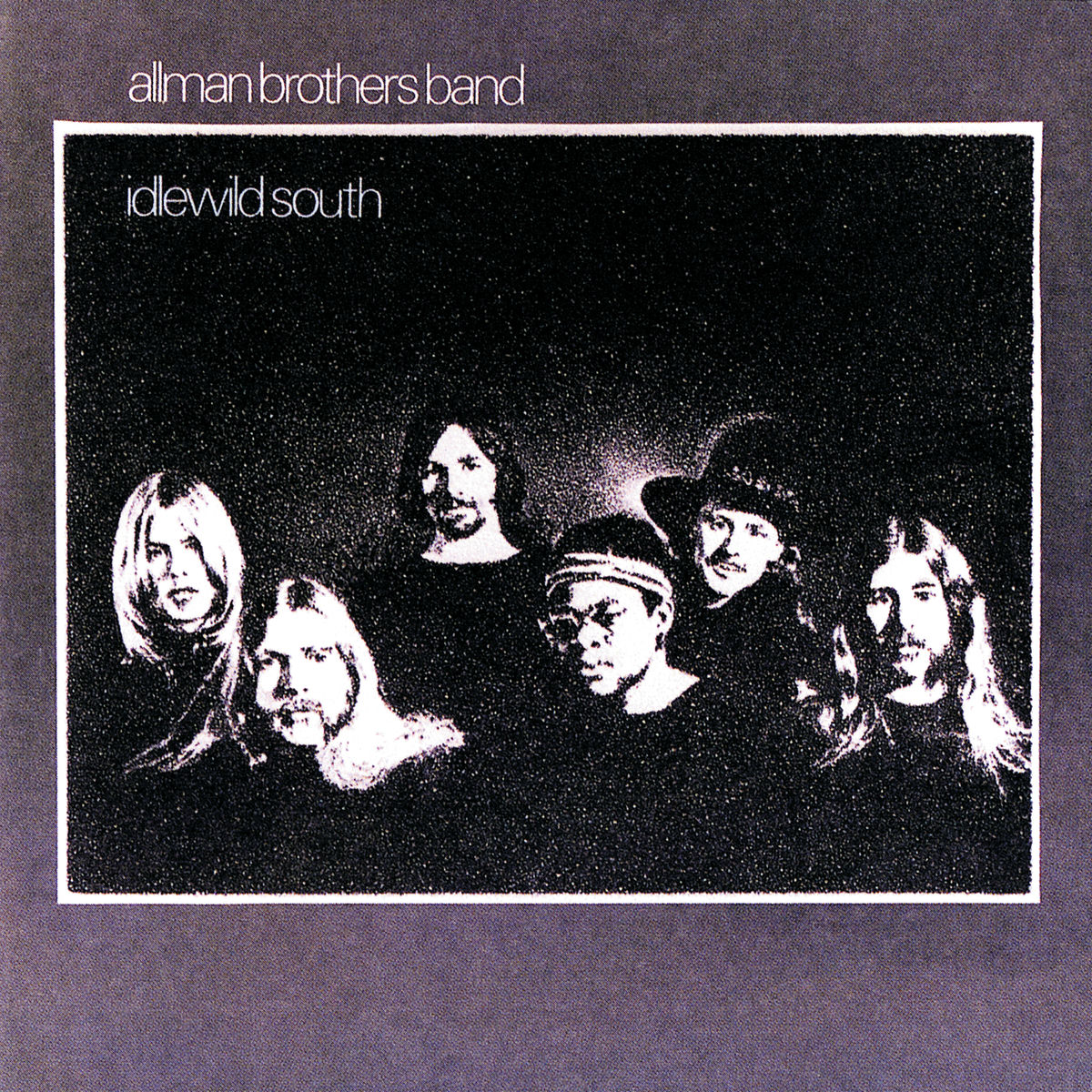 Some songs don’t just play—they move. They pulse, they shuffle, they swagger, they glide. “Long Train Runnin’” by the Doobie Brothers, released in 1973, belongs to that rare category of tracks that seem to generate their own kinetic energy. The instant the guitar riff kicks in, you feel like you’re stepping into motion, caught in a rhythmic current that refuses to sit still. It’s a song powered by groove more than narrative, by feel more than story, and that’s exactly why it still sounds electric more than fifty years later. The Doobie Brothers had already established themselves as masters of harmony-rich rock by the early ’70s, but this track marked a seismic shift in how the world understood their sound. Suddenly, they weren’t just a rock band—they were a groove machine.
Some songs don’t just play—they move. They pulse, they shuffle, they swagger, they glide. “Long Train Runnin’” by the Doobie Brothers, released in 1973, belongs to that rare category of tracks that seem to generate their own kinetic energy. The instant the guitar riff kicks in, you feel like you’re stepping into motion, caught in a rhythmic current that refuses to sit still. It’s a song powered by groove more than narrative, by feel more than story, and that’s exactly why it still sounds electric more than fifty years later. The Doobie Brothers had already established themselves as masters of harmony-rich rock by the early ’70s, but this track marked a seismic shift in how the world understood their sound. Suddenly, they weren’t just a rock band—they were a groove machine.
What makes “Long Train Runnin’” so enduring is that it captures a rare alchemy: a hypnotic guitar riff, gritty vocals, a propulsive beat, and an energy that feels both spontaneous and meticulously crafted. It’s a track born from a jam—literally a song Tom Johnston used to noodle with onstage, nicknamed “Osborn” because it had no lyrics yet—but it evolved into an anthem that helped define the Doobie Brothers’ signature blend of rock, funk, and soul. Over the decades, it has been embraced by fans of classic rock, dance music, jam bands, and even R&B revivalists. And despite its simple lyrical structure, the song manages to evoke movement, longing, and urgency without ever slowing down.
From Jam Session Chaos to Studio Perfection
The creation story of “Long Train Runnin’” has become part of Doobie Brothers lore. For years, the band used the riff as an onstage warm-up, letting it stretch into long, funky improvisational jams. Producer Ted Templeman recognized the potential and pushed Johnston to turn the groove into a full song. Initially reluctant—Johnston was convinced the riff worked best as a live jam—he finally gave in, crafting lyrics that matched the song’s relentless momentum.
That sense of spontaneity still lives in the recorded version. The track doesn’t feel like something meticulously planned out on paper. It sounds like electricity caught on tape. Johnston’s choppy, percussive guitar style gives the song its heartbeat, while the harmonica weaves through the mix like a train whistle echoing across a landscape. The band’s layered rhythms—especially the dual drummers—bring a muscular, locomotive drive that pushes everything forward.
Every piece works in tandem. Nothing dominates, but everything is essential. The result is a groove so confident and locked-in that even listeners who don’t know a single word can’t resist tapping their feet or nodding their heads.
1973: A Year of Sonic Adventure
The year 1973 was a transformative time in rock music. Genres clashed and blurred—funk was thriving, soul was evolving, disco was rumbling beneath the surface, and rock bands were becoming more curious about rhythm and texture. “Long Train Runnin’” arrived at this perfect crossroads. It blended the raw edge of American rock with the infectious groove of funk and the soulful undertones of R&B. Instead of choosing a lane, it tied them all together.
For the Doobie Brothers, this song represented a creative breakthrough. Up to this point, they were best known for harmony-rich rock songs like “Listen to the Music.” But this track showcased an entirely different dimension of their sound—one rooted in rhythm, grit, and sweat. It helped establish them not just as melody-makers, but as groove-driven craftsmen who could command a dance floor as easily as a concert hall.
As rock became more experimental in the early ’70s, “Long Train Runnin’” stood out by being both daring and accessible. It was edgy without being alienating, funky without abandoning the band’s identity, and catchy without sacrificing musicianship. That balance is part of why it has aged so gracefully.
A Riff That Refuses to Age
If you strip the song down to its essence, the riff is the star. It’s instantly recognizable—sharp, tight, rhythmic, and impossibly addictive. Unlike many classic-rock riffs built on power chords or distortion, Johnston’s guitar line is rooted in percussive, rhythmic strumming that feels almost like a funk guitarist sitting in with a rock band.
The riff loops but never feels repetitive. It carries a forward-driving urgency, like wheels clattering on a track. The song’s arrangement lets the riff breathe, shift, weave, and re-emerge throughout the track, acting as both anchor and engine.
It’s the kind of riff guitar players love to learn—not because it’s technically difficult, but because it feels incredible to play. It has bounce. It has swing. It has attitude. And like the best riffs in rock history, it’s unforgettable after one listen.
Lyrics That Evoke Motion and Spirit
While “Long Train Runnin’” is famous for its groove, its lyrics carry a surprising emotional depth. Johnston originally didn’t want to add words at all, but once he did, he tapped into themes that blended movement, freedom, urgency, and survival.
Lines like:
“Without love, where would you be now?”
give the song a spiritual and emotional core. It’s almost a mantra—simple, direct, and universally resonant. The music may drive the train, but the lyrics give it purpose.
Other lines paint a picture of traveling towns, small communities, and the struggles of everyday people, evoking the folk and blues traditions of American storytelling. While the song doesn’t follow a strict narrative, the imagery of trains, journeys, and longing gives it a timeless Americana flavor.
That Harmonica: A Voice of Its Own
One of the most distinctive elements in “Long Train Runnin’” is the harmonica. It doesn’t feel like a decorative addition—it feels like a living, breathing presence woven into the song’s DNA.
The harmonica wails in and out like a train whistle echoing across open countryside. It reinforces the song’s locomotive energy, adding grit and soul that amplify the track’s emotional pull. In many ways, the harmonica acts as a counter-voice to Johnston’s vocals, offering a kind of wordless commentary.
It’s no exaggeration to say that removing the harmonica from this track would be like removing a character from a story. It belongs there, and it elevates everything around it.
Why the Song Still Lights Up Rooms Today
The Doobie Brothers created many iconic tracks, but “Long Train Runnin’” has a special kind of eternal spark. It’s one of those songs you hear in a bar, on a road trip, at a summer festival, or in a movie—and it instantly changes the atmosphere. Even people who don’t know the Doobie Brothers will instinctively respond to its rhythm.
Why does it still work so well?
Because it’s built on feel.
The song isn’t overly complex, lyrically heavy, or technically flashy. It’s pure groove, distilled into three and a half minutes of rhythmic perfection.
Because it bridges musical generations.
Classic rock fans love it. Jam-band fans embrace it. Funk and soul listeners respect it. DJs and producers have sampled or remixed it. It’s a rare song that transcends genre boundaries without losing its identity.
Because it’s danceable without being disco.
The beat is irresistible, but the track still feels gritty and real. It lives in that sweet spot between rock and funk where it can energize any crowd.
Because it feels alive.
Even on studio recordings, the song gives off the vibe of musicians playing with passion and spontaneity. That vitality never fades.
A Live Staple With Endless Energy
If the studio version feels alive, the live versions feel downright explosive. The Doobie Brothers have been performing “Long Train Runnin’” for over fifty years, and it remains a fan favorite at every show. The band often stretches it out into extended jams, letting the groove breathe and evolve onstage.
Those live renditions highlight something important: “Long Train Runnin’” was born from improvisation. And in many ways, it still thrives most when it’s allowed to stretch beyond the confines of the original arrangement. The track is a living organism—fluid, rhythmic, and adaptable.
Watching a crowd respond to it in real time is a reminder that great music is a physical experience as much as an emotional one. The song doesn’t just ask you to listen—it asks you to move.
A Timeless Piece of American Groove
“Long Train Runnin’” is more than a hit single from 1973. It’s a testament to what happens when a band follows its instincts, embraces spontaneity, and captures the magic of a moment. It’s a song built on feel—raw, rhythmic, driving feel—and that kind of energy never goes out of style.
There are songs that tell their story with words, and there are songs that speak through the movement they create. “Long Train Runnin’” is the latter. It’s a track that continues to inspire air guitarists, dance-floor regulars, jam-band devotees, and anyone who simply can’t resist a great groove.
Over five decades after its release, the song still sounds fresh, urgent, and locomotive-strong. And as long as there are guitar riffs to strum, feet to tap, and hearts that respond instinctively to rhythm, “Long Train Runnin’” will keep rolling—steady as steel, fast as fire, and unmistakably alive.


